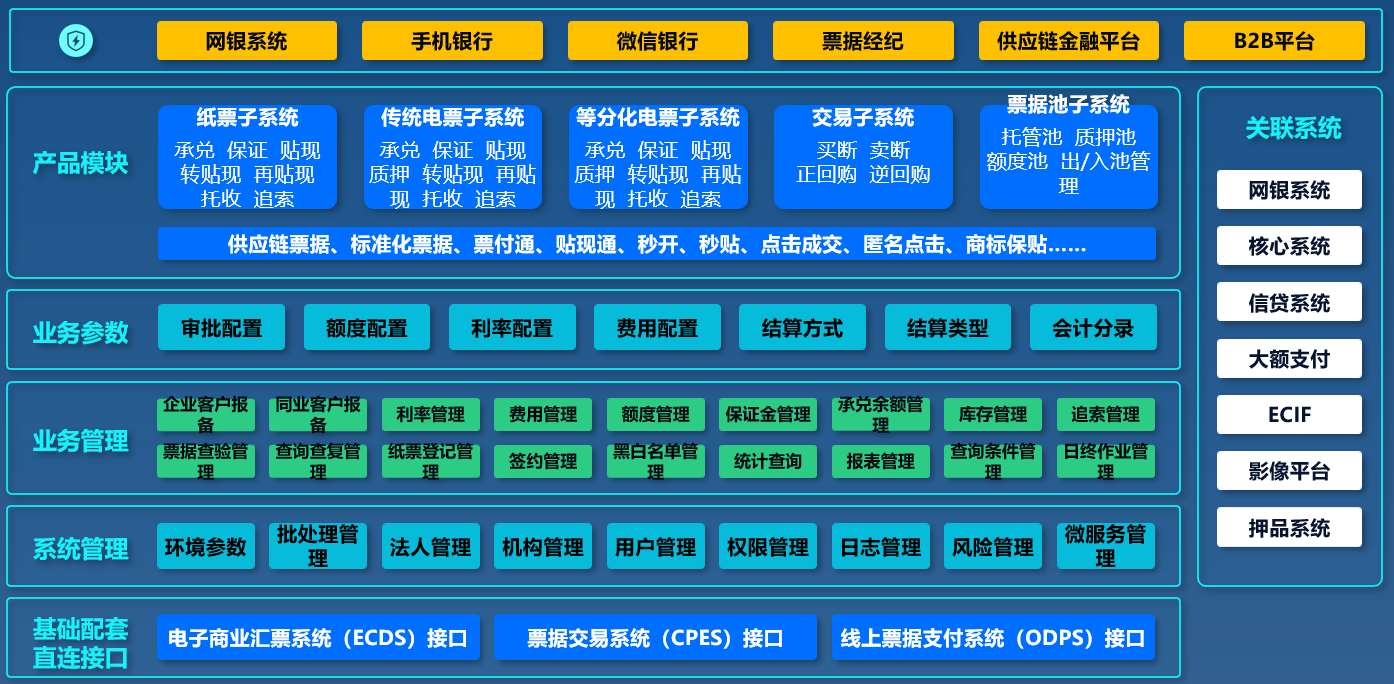
Client: CDB
Industry: Finance
Products/Solutions: Electronic Commercial Drafts
Keywords: CPES, ECDS

In recent years, with the rapid and stable development of China's economy, the improvement of corporate credit levels, and the increase of direct financing needs, the use of commercial drafts in China has been increasing. The volume and scale of the transactions in the bill market have been expanding, and the bill business has become the focus of profit-making for major commercial banks and financial institutions. However, with the increase in the bill business of the member units of clearing houses, the structure and stability of the original bill system of financial institutions have not kept pace with the development of the business. It is urgent to build a comprehensive bill management system with complete functions, advanced processes, and a wide range of applications.
In order to improve the processing level of the bill business, enhance the innovation ability, and elevate user experience, the Shanghai Commercial Paper Exchange Corporation planned to comprehensively optimize the electronic commercial draft system and China’s bill trading system in 2021, and build a new generation of bank acceptance bill management platform that can handle the full life cycle of bill business functions.

The next-generation bank acceptance management platform is a heavyweight bill business product jointly developed by Beiming Software and Shanghai Zhongpiao. It covers the entire business process and product services of electronic commercial drafts, paper commercial drafts, and bill pool financing business. It provides an effective operation platform, management tools and communication channels for carrying out bill business, and enables real-time supervision and regulation of bill sources and flows, the use and direction of funds, risk formation and symptoms, so as to achieve standardized management. At the same time, the platform meets the needs of backend accounting settlement transactions as well as the scientific identification, definition and evaluation of the headquarters and branches, effectively preventing, controlling, and resolving the policy risks, credit risks and operational risks of the bill business. It aims to ensure rapid, steady and long-term business development through advanced management.

The platform meets the requirements of SOA architecture with a well-designed data model that supports flexible expansion, meeting the requirements of customer data governance; the business components are reasonably planned and can be flexibly expanded to meet diverse customer needs; the product adopts a modular structure, with hot-swappable sub-modules, which has good scalability.
2. Powerful Data Analysis and Statistical Capabilities
The data system of the platform conforms to the national standards and data specifications of the financial industry. It meets the data and analysis requirements of various information submission and regulatory inspection systems such as the People's Bank of China. The powerful data statistical capabilities support a diversified display of reports, which provides robust foundational data for the construction of the bank's business intelligence systems.
3. Comprehensive Risk Control
The platform is equipped with a diversified warning mechanism, which effectively supports various requirements such as accounting management, performance appraisal, comprehensive risk management and new capital agreements, meeting the needs of regulatory compliance and risk control, and facilitating refined client management.
4. Open Architecture Supports Horizontal Expansion
The system adopts open architecture and mainstream technology platform that supports horizontal expansion, multiple relational databases, middleware and hardware platforms, providing standard financial services with consistent channels while ensuring stability, flexibility and scalability.

The new-generation bank acceptance bill management system combines the previously scattered ECDS and trading system processes, covering the full lifecycle of electronic bill transactions. It integrates the registration, custody, clearing, settlement, participant management and other back-office supportive services from both systems. For the first time, a business system and a set of interfaces can handle the full lifecycle business of paper and electronic bills. This fundamentally solves the problems of duplicate investment and system fragmentation caused by the coexistence of two systems, and saves system costs while improving business efficiency. This is the first time that the bill market has achieved organic unification in terms of business systems and rules.
In order to solve the payment pain points such as the mismatch in the settlement amounts between enterprises, the new generation of bank acceptance bill management system is empowered by technology to optimize the issuance and circulation of traditional e-bills. It supports the issuer in issuing a bill package consisting of a standard amount (0.01 yuan). Bill holders can flexibly use this bill package according to the actual transaction amount in each business link in various business scenarios. The "change payment" function of bills helps enterprises to revitalize the backlog of bill assets more efficiently, providing strong support for bills to better serve the real economy and achieve higher-quality development.
The new generation of bank acceptance bill management systems introduces functions such as enterprise information filing and proactive bill account management, which enhances and pre-validating enterprise identity checks and controls; deepens the disclosure of acceptance information, optimizes the application of credit information inquiry, and strengthens the credit constraints of the market; the system also improves the automated level of bill maturity processing, and reduces the operational and moral risks associated with bill payments. It establishes a bill business monitoring platform to conduct big data analysis and monitoring of risk behaviors such as over-acceptance by acceptors, which improves the emergency handling mechanism of risk bills, enhancing the comprehensive management and control capabilities of banks in the face of complex risks.